
How to Use MCP23017_IO_Expansion_board: Examples, Pinouts, and Specs
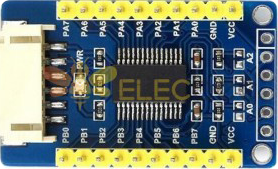
 Design with MCP23017_IO_Expansion_board in Cirkit Designer
Design with MCP23017_IO_Expansion_board in Cirkit DesignerIntroduction
The MCP23017 I/O Expansion Board is a versatile and powerful component that allows users to increase the number of digital input/output (I/O) ports available to a microcontroller, such as an Arduino or Raspberry Pi. Utilizing the MCP23017 integrated circuit from Microchip Technology, this board communicates via the I²C interface, making it an ideal choice for projects that require additional I/O ports without occupying too many pins on the main microcontroller.
Explore Projects Built with MCP23017_IO_Expansion_board
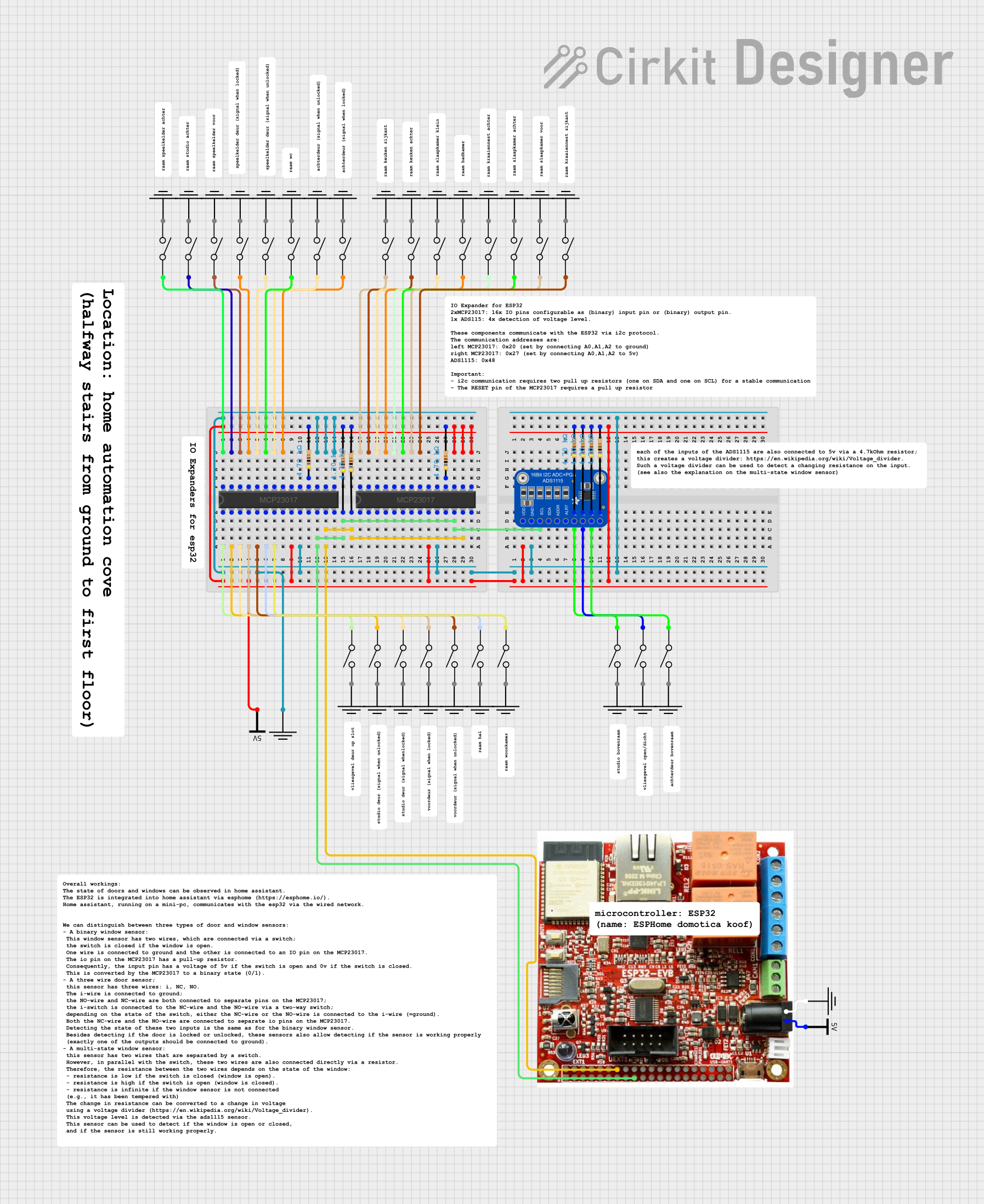
 Open Project in Cirkit Designer
Open Project in Cirkit Designer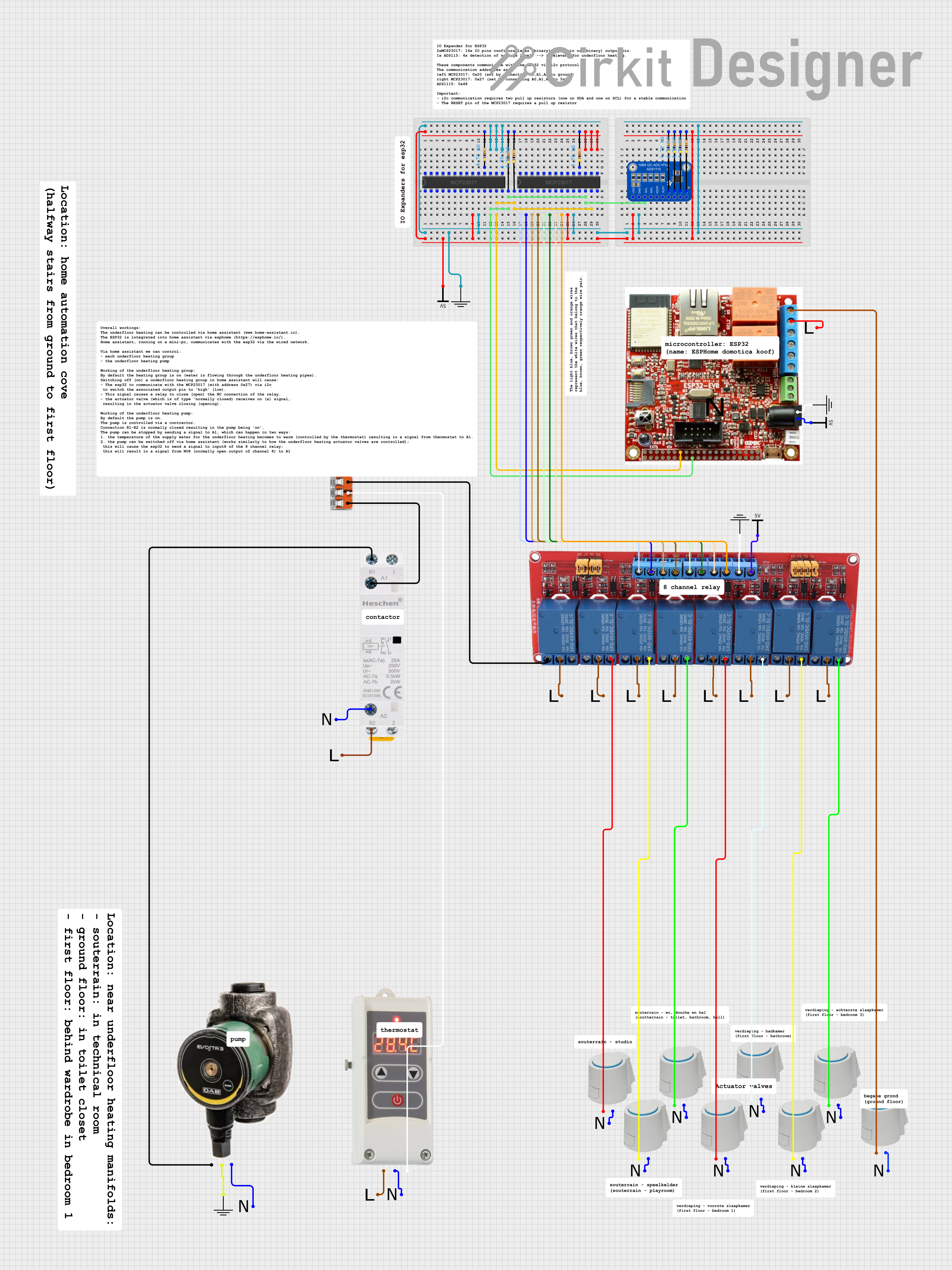
 Open Project in Cirkit Designer
Open Project in Cirkit Designer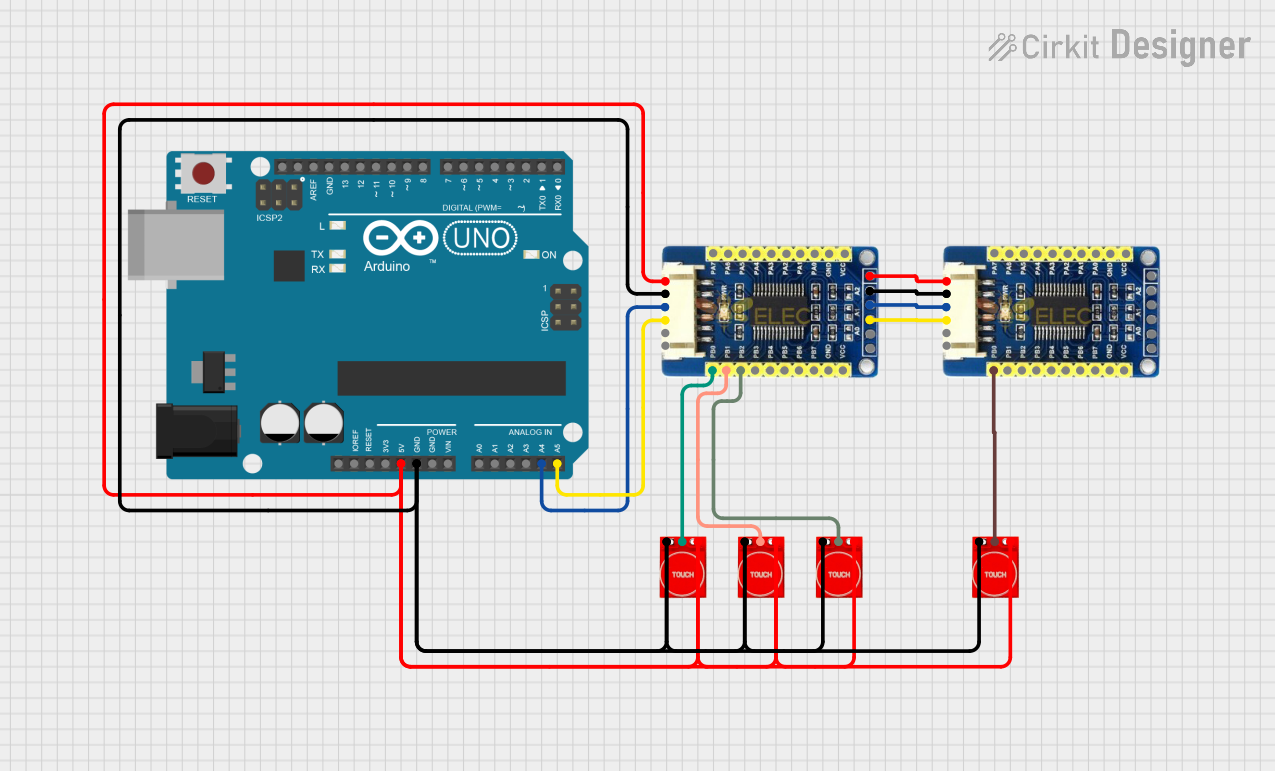
 Open Project in Cirkit Designer
Open Project in Cirkit Designer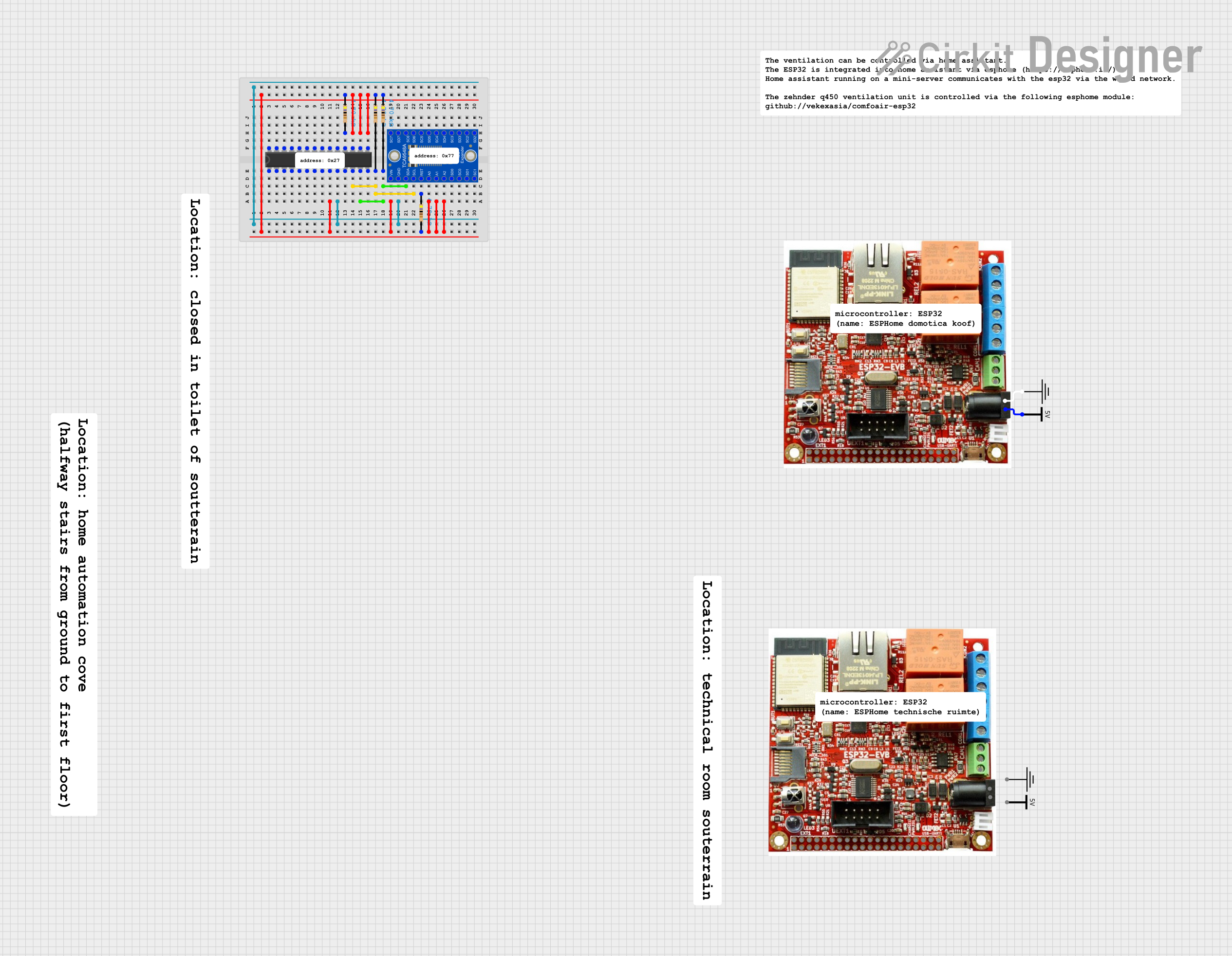
 Open Project in Cirkit Designer
Open Project in Cirkit DesignerExplore Projects Built with MCP23017_IO_Expansion_board

 Open Project in Cirkit Designer
Open Project in Cirkit Designer
 Open Project in Cirkit Designer
Open Project in Cirkit Designer
 Open Project in Cirkit Designer
Open Project in Cirkit Designer
 Open Project in Cirkit Designer
Open Project in Cirkit DesignerCommon Applications and Use Cases
- Home automation systems
- Robotics
- DIY gaming controllers
- Expanding I/O capabilities for microcontroller projects
- Prototyping and educational purposes
Technical Specifications
Key Technical Details
- Operating Voltage: 1.8V to 5.5V
- Current Rating: 25 mA per I/O pin
- Temperature Range: -40°C to +125°C
- Communication: I²C serial interface
- I/O Ports: 16 additional I/O pins
- Interrupt Output Pins: Two (one for each port)
Pin Configuration and Descriptions
| Pin Number | Pin Name | Description |
|---|---|---|
| 1 | GPB0 | I/O port B0 |
| 2 | GPB1 | I/O port B1 |
| ... | ... | ... |
| 9 | VDD | Power supply (1.8V to 5.5V) |
| 10 | VSS | Ground |
| 11 | NC | No Connection |
| ... | ... | ... |
| 18 | SCL | Serial Clock Line for I²C |
| 19 | SDA | Serial Data Line for I²C |
| 20 | RESET | Reset input (active low) |
Note: This table is a partial representation. Refer to the MCP23017 datasheet for the full pinout.
Usage Instructions
How to Use the Component in a Circuit
Powering the Board:
- Connect VDD to the power supply (1.8V to 5.5V).
- Connect VSS to the ground.
I²C Communication:
- Connect SDA and SCL to the corresponding SDA and SCL pins on the microcontroller.
- Ensure pull-up resistors are in place for both SDA and SCL lines if not provided by the microcontroller.
Address Selection:
- The MCP23017 has three address pins (A0, A1, A2) for configuring up to 8 different addresses on the same I²C bus.
Connecting I/O Pins:
- Connect the desired I/O pins (GPB0-GPB7, GPA0-GPA7) to the peripherals or devices you wish to control.
Important Considerations and Best Practices
- Always ensure that the power supply voltage is within the specified range to prevent damage.
- When using multiple MCP23017 boards on the same I²C bus, configure each with a unique address.
- Use decoupling capacitors close to the power pins to minimize power supply noise.
- Avoid running I²C lines near high-current traces to prevent interference.
Troubleshooting and FAQs
Common Issues Users Might Face
I²C Communication Failure:
- Check for correct pull-up resistor values on SDA and SCL lines.
- Verify that the MCP23017 is properly addressed and that there are no address conflicts on the I²C bus.
Unexpected Behavior or No Response from I/O Pins:
- Ensure that the MCP23017 is correctly initialized in your code.
- Check for proper power supply and ground connections.
Solutions and Tips for Troubleshooting
- Use I²C scanning code to confirm that the MCP23017 is detected on the bus.
- Double-check wiring, especially for SDA, SCL, and address pins.
- Consult the MCP23017 datasheet for detailed information on register configurations and operation modes.
FAQs
Q: Can I use the MCP23017 with a 3.3V system? A: Yes, the MCP23017 operates from 1.8V to 5.5V, making it compatible with both 3.3V and 5V systems.
Q: How many MCP23017 boards can I chain together on a single I²C bus? A: You can chain up to 8 MCP23017 boards on a single I²C bus by configuring each with a unique address using the A0, A1, and A2 pins.
Q: Do I need to use external pull-up resistors for the I²C lines? A: Yes, if the microcontroller does not have built-in pull-up resistors, you will need to add them externally. Typical values are 4.7kΩ to 10kΩ.
Example Code for Arduino UNO
#include <Wire.h>
#include "Adafruit_MCP23017.h"
// Initialize MCP23017
Adafruit_MCP23017 mcp;
void setup() {
Wire.begin(); // Start I²C bus
mcp.begin(); // Default address 0x20
// Set pin #0 to output
mcp.pinMode(0, OUTPUT);
}
void loop() {
// Toggle pin #0
mcp.digitalWrite(0, HIGH); // Set pin high
delay(500);
mcp.digitalWrite(0, LOW); // Set pin low
delay(500);
}
Note: This example uses the Adafruit MCP23017 Arduino library. Make sure to install the library before compiling the code.
Remember to keep code comments concise and within the 80 character line length limit.